As winter blankets Korea in a serene layer of snow, the country reveals its captivating charm and rich cultural heritage. From the lush tea plantations of south to the enchanting landscapes of Nami Island, January offers a unique opportunity to experience Korea’s beauty and traditions.
The January itinerary for Korea below takes you through a delightful journey, beginning with outdoor exploration on Nami Island, where picturesque tree-lined avenues beckon you to discover their winter magic. You’ll immerse yourself in history at Gyeongbokgung Palace in Seoul, savor the coastal delights of Busan, and embrace the tranquility of the Seonjaryeong Mountains.
Conclude your trip with a peaceful visit to the renowned Boseong Green Tea Plantation, where you can indulge in tea tastings and learn about local production methods. For those seeking an even richer experience, exclusive winter tours in Korea offer winter sports, culinary adventures, and cultural immersion.
With vibrant festivals, traditional Korean New Year celebrations, and enchanting winter scenery, this Korea January itinerary invites you to explore and enjoy the diverse wonders of the peninsula.

Jump to:
- ❄️ January Weather in Korea
- 👨👩👦 Crowd and Cost in Korea in January
- 🧥 What to Wear in Korea in January
- 🎿Skiing in Korea in January
- 📸 Places to Visit in Korea in January
- 🥳 Korean Festivals in January
- 🎊 Korean Public Holidays in January
- 🍜 Korean Foods to Try in January
- 📝 Korea Itinerary for January
- ✅ Exclusive Winter Tours for Korea in January
- ❓ Frequently Asked Questions
- 💬 Comments
❄️ January Weather in Korea
January is the coldest month of the year in South Korea, bringing consistently frosty temperatures across the country. In Seoul, travelers must bundle up even on the warmest days, as the average high temperature is a chilly 34°F (1°C).
Nights are even colder, with temperatures dropping to an average low of 16°F (-8°C). Despite the frigid conditions, January offers a unique chance to experience the capital city adorned in a delicate blanket of snow.
Seoul typically receives just over an inch before the end of the month. For those who can endure the cold weather and biting winter winds, the reward is ample sunshine, averaging 5.5 hours daily, making for some beautiful, crisp winter days.
Outside the bustling capital, temperatures remain uniformly cold, though they can vary slightly. In the northern ski resorts of Pyeongchang, visitors will find a true winter wonderland with snow-covered landscapes and an average high temperature of 29°F (-1°C).
Even the beaches on the southern islands, including popular destinations like Jeju Island, do not escape the wintry touch, with temperatures ranging in the mid-to-low 40s F. These chilly conditions across the country provide a compelling backdrop for winter sports enthusiasts and those looking to experience South Korea's serene winter beauty.
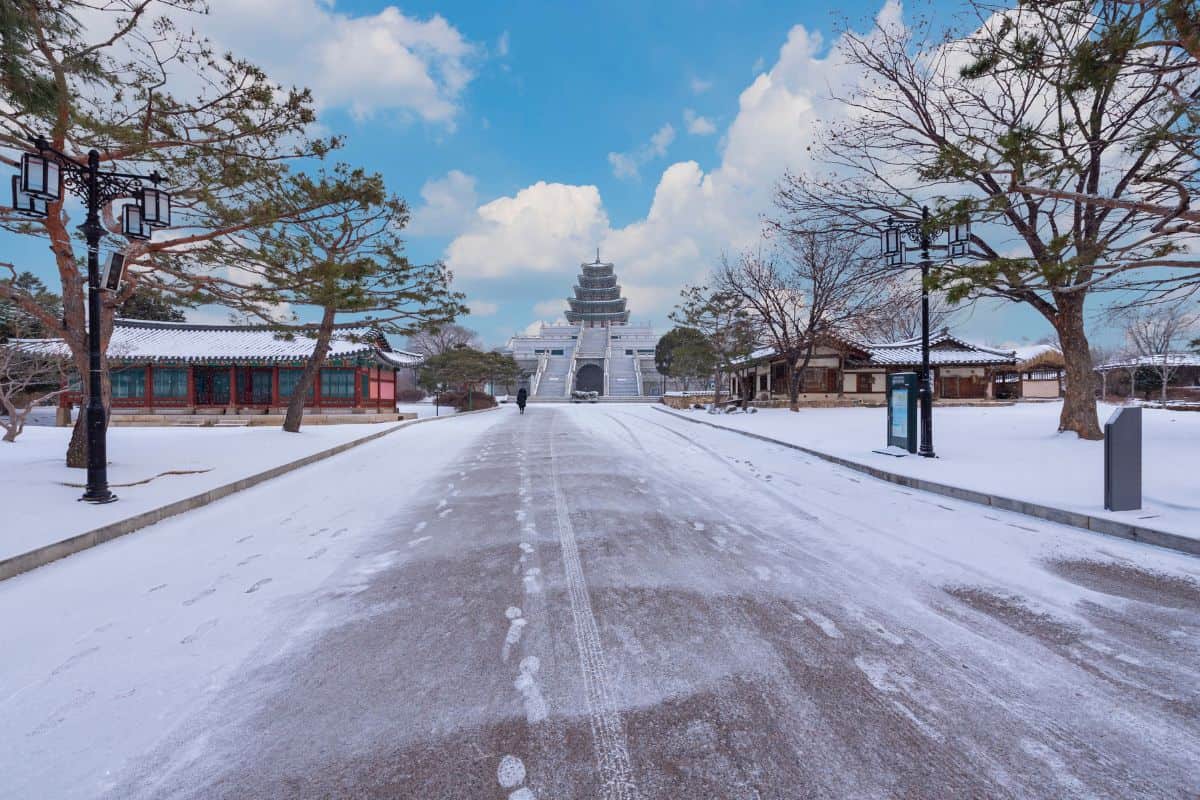
👨👩👦 Crowd and Cost in Korea in January
January is a great time for travelers seeking to explore South Korea with minimal crowds. As the peak holiday season concludes, the usual influx of visitors dwindles, with many tourists awaiting spring's milder temperatures and vibrant blooms.
This lull in tourist activity means that key attractions in cities like Seoul are less crowded, allowing visitors to enjoy iconic sights without the hassle of long lines. Additionally, this off-season period brings lower prices on airfare, luxury hotels in Seoul, and various attractions, making it an economically savvy time to visit.
The primary exception to the low crowd trend in January is at South Korea's ski resorts. These snowy havens attract winter sports enthusiasts eager to take advantage of the prime skiing and snowboarding conditions.
Resorts near Seoul experience the highest visitor numbers, especially on weekends and throughout the month, when many local students are on winter break. For travelers planning to indulge in an alpine adventure, booking accommodations well in advance is advisable to secure the best rates and ensure availability during this peak season for winter sports.
🧥 What to Wear in Korea in January
- Padded Parka: Invest in a high-quality, insulated coat to keep warm in frigid temperatures.
- Warm Layers: Start with thermals and layer up with turtleneck sweaters or knit tops for versatile warmth.
- Thermal Leggings: Pack thermal leggings or fleece-lined jeans for extra comfort and warmth.
- Waterproof Boots: Choose warm, waterproof boots with good grip to navigate icy sidewalks safely.
- Stylish Hat or Beanie: Keep your head and ears warm; hats can also serve as a fashion statement.
- Insulated Gloves: Don't forget insulated gloves, preferably touchscreen-friendly for easy smartphone use.
- Oversized Scarf: A thick scarf can provide warmth for your neck and even cover your face in windy conditions.
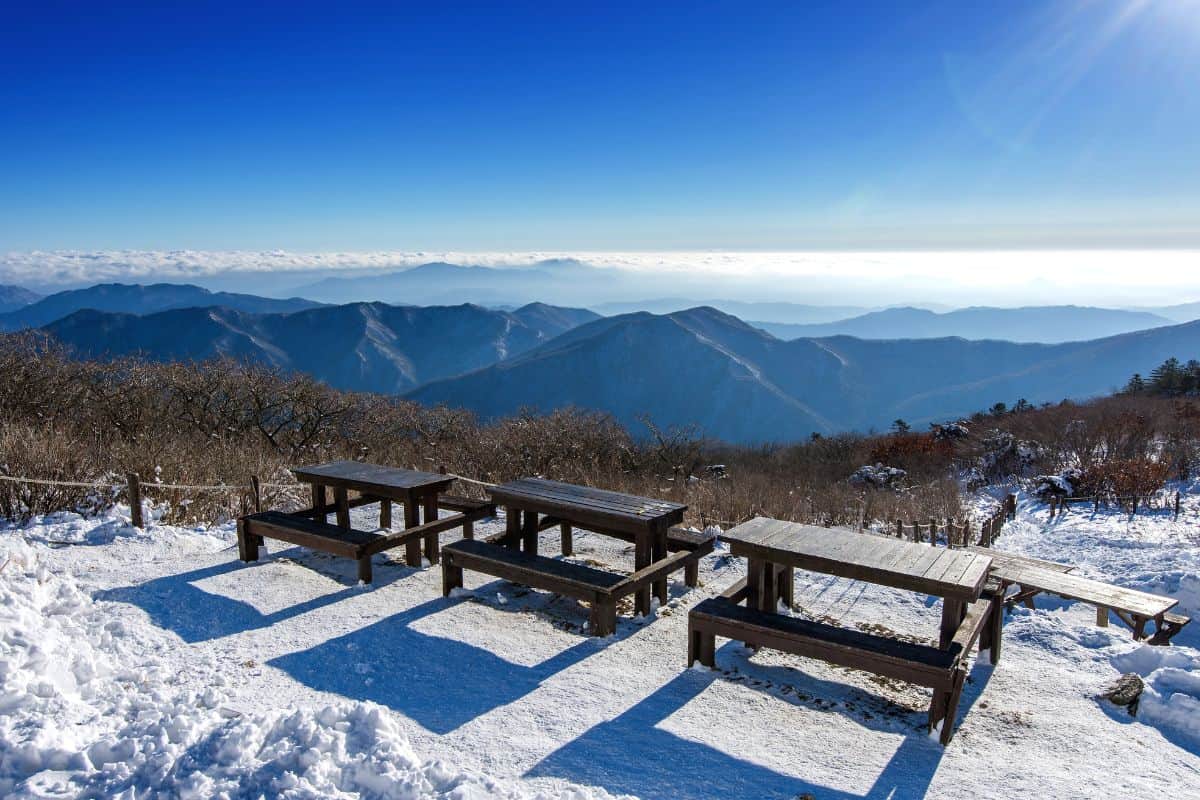
🎿Skiing in Korea in January
For those eager to embrace the winter season, Korea's ski resorts present a fantastic opportunity to hit the slopes. Known for their well-groomed and beginner-friendly tracks, these resorts feature safety barriers that line the entire runs, ensuring peace of mind for novice skiers.
Absolute beginners will delight in the bunny hills specifically designed for them, allowing them to familiarize themselves with the basics of skiing without the pressure of more advanced runs. Beginner courses are crafted with ease in mind, offering slopes that are manageable enough for first-timers to successfully navigate without frequent spills.
The prime destinations for skiing in Korea are located in the northeastern province of Gangwon-do, famously known for hosting the 2018 Pyeongchang Winter Olympics, and in Muju, situated further south. This is where I lived for three years, and boasts a mix of stunning winter landscapes and varied runs that cater to skiers of all skill levels.
While the slopes are relatively narrow, which may pose a challenge for new snowboarders, the scenic views and the invigorating mountain air make the experience truly enjoyable. Whether someone is seeking adrenaline or simply a picturesque winter getaway, Korea’s ski resorts offer an exceptional snowy retreat.
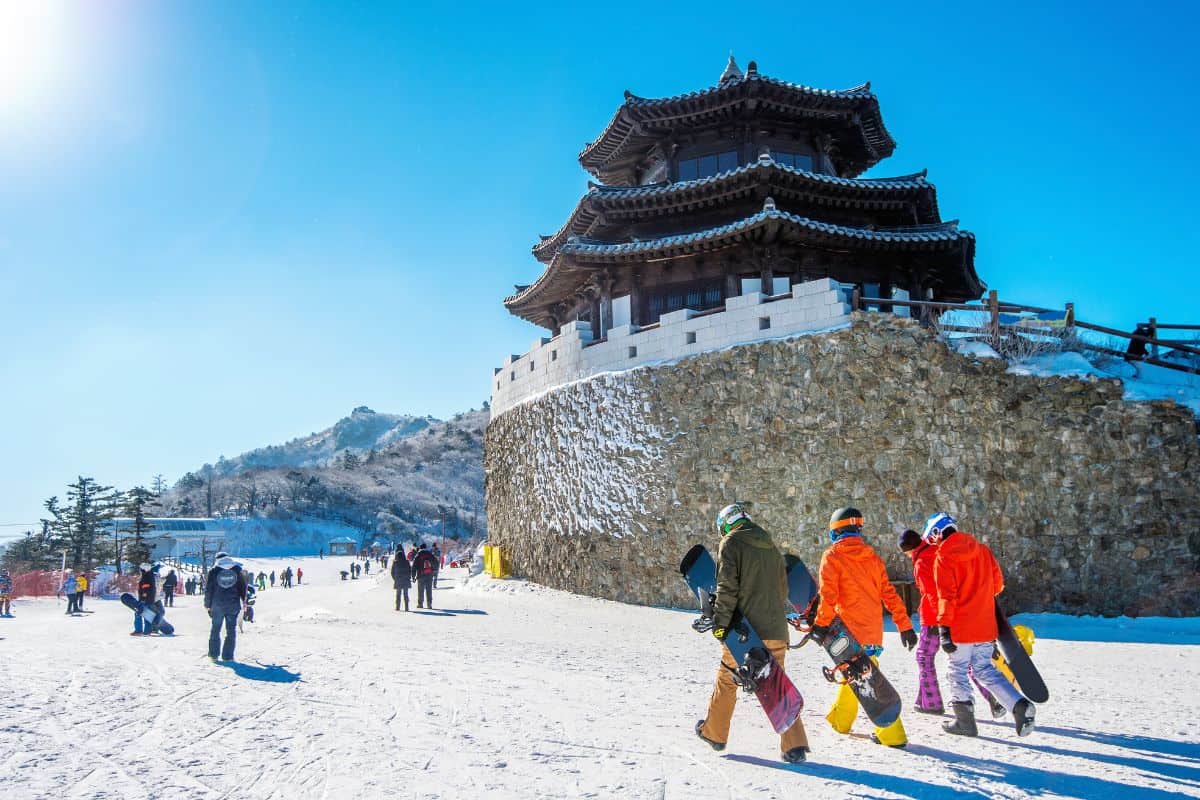
📸 Places to Visit in Korea in January
Bukhansan National Park
Nestled in the northeastern corner of South Korea, Bukhansan National Park spans an impressive 30.86 square miles (79.92 sq km) and offers a rich blend of nature and culture. The park is renowned for its majestic granite summits surrounded by dense forest areas, creating a breathtaking landscape that outdoor enthusiasts will find irresistible.
The highest peak, Baekundae, reaches 2,744 feet (836.5 m), providing panoramic views that reward those who undertake the climb. The stunning Insubong and Mangnyeongdae peaks are not far behind, standing tall at 2,659 feet (810.5 m) and 2,623 feet (799.5 m), respectively. The rugged granite formations peeking out over the verdant forests make for a picturesque scene, complementing the park's serene beauty.
Bukhansan National Park is not just about natural beauty; it is also steeped in history. Visitors can explore the Bukhansanseong Fortress, a significant draw to the park constructed in the 1700s. This historical site and several other temples and remnants of historical architecture offer a glimpse into Korea's rich past.
While only 6 of the original 13 Buddhist temples remain, these structures serve as important cultural landmarks. Although the park isn't particularly known for its wildlife, it is home to water deer, wild boar, chipmunks, and squirrels. Birdwatchers will delight in various bird species, including multiple types of woodpeckers, songbirds, and even birds of prey.
Winter offers cooler temperatures for those planning a visit, making it an ideal time to hike without the risk of overheating and culminating in the heavenly views from Baegundae Peak.
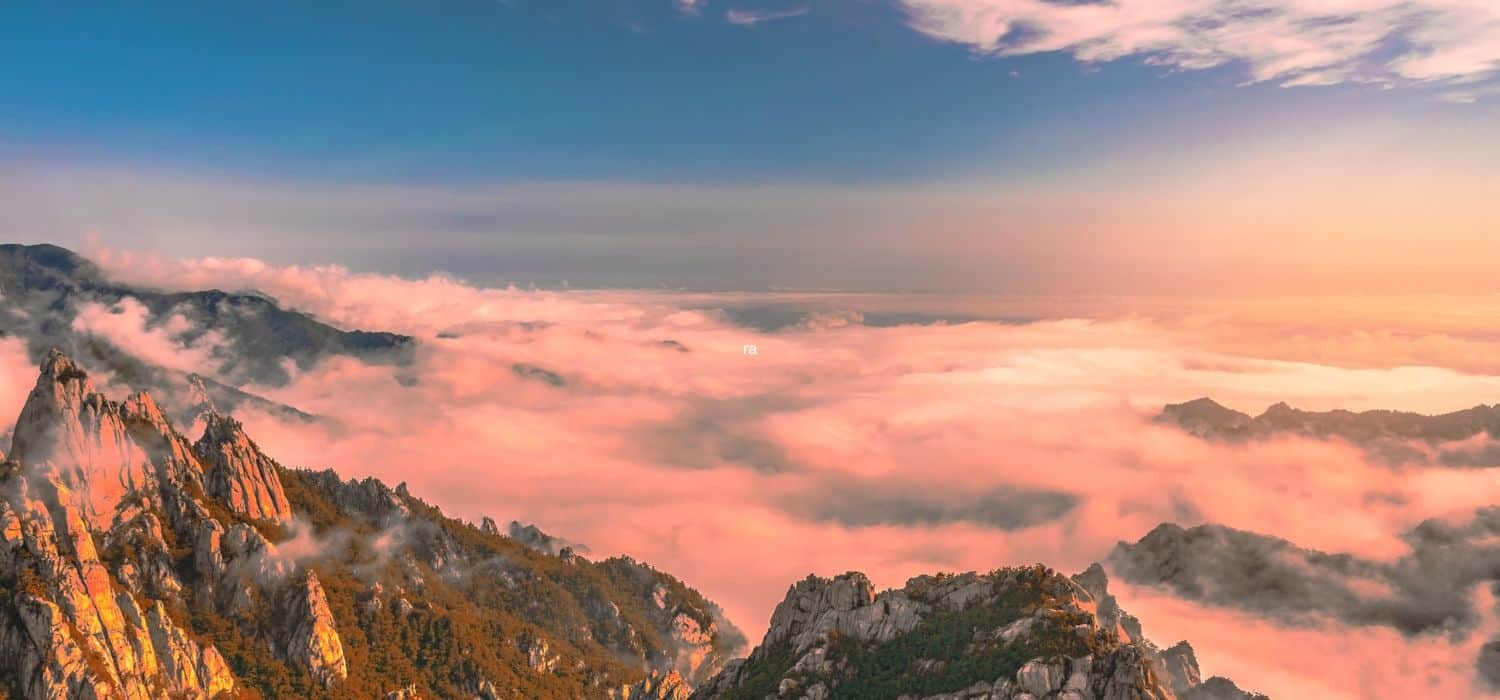
Gangchon Rail Bike Park
Following the opening of the Gyeongchun Subway Line, what used to be the old train tracks has been transformed into the vibrant Gangchon Rail Park, enticing travelers with a unique outdoor adventure. Located adjacent to the Gimyujeong Station, this park offers an array of attractions designed to enhance any visitor's experience.
There's something for everyone, from large book-themed photo zones perfect for capturing memorable moments to delightful cafes and an exhilarating zipline. The rail bike course spans 8.5 km, comprising 6 km of pedal-powered rail biking followed by a leisurely 2.5-km train ride. Most of the journey is downhill with breathtaking views of the mountains, lush fields, and the serene river.
For those seeking an extra thrill, the park features a VR experience that allows riders to immerse themselves in an innovative virtual adventure for an additional fee. As the journey concludes with the scenic train ride along the picturesque Bukhangang River, a shuttle bus awaits to transport visitors back to the starting point.
Additionally, the Gyeonggang Rail Bike offers a 7.2-km route starting from Gyeonggang Station, available at a separate charge, giving travelers even more opportunities to explore South Korea's stunning landscapes while indulging in this unforgettable cycling experience.
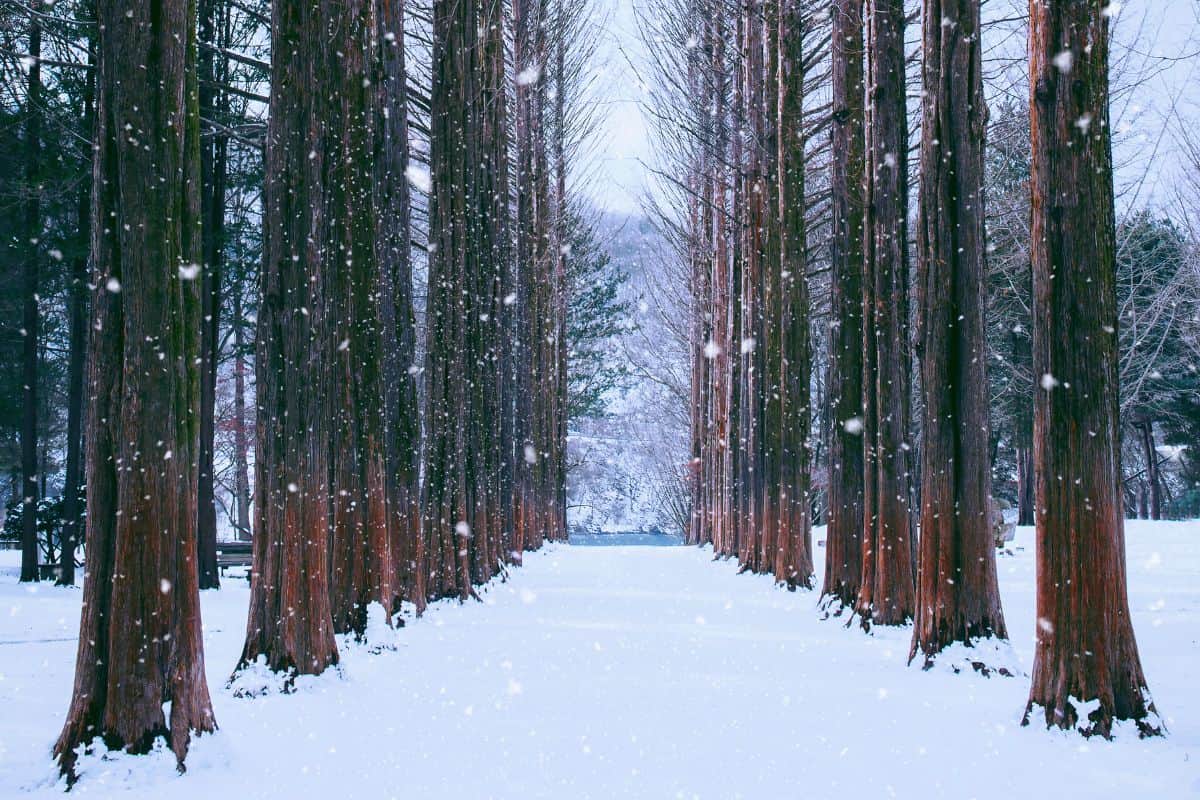
Nami Island in Winter
Nami Island, crafted with the enchanting themes of “Fairy Tale Village and Song Village,” is a magical destination that offers a plethora of cultural events, concerts, and exhibitions. These events ignite dreams and hopes for children, create cherished memories for couples, and serve as a creative haven for artists.
Visitors with kids can explore the unique facilities, such as the Song Museum and the Picture Book Playground while enjoying fun activities like the Charity Train and Story Tour Bus. For those looking for adventure, bicycles can be rented to discover the island at a leisurely pace.
Dining options abound, with restaurants serving delectable dishes made from locally sourced ingredients. For those seeking a special experience, Hotel Jeonggwanru offers themed accommodations that add a touch of whimsy to any stay.
As winter wraps Nami Island in its icy embrace, the Bukhangang River transforms into a shimmering expanse, inviting brave souls to experience the unique thrill of an icebreaker ride across the frozen surface. While zip-lining may sound exhilarating, the icebreaker provides a charmingly chilly start to explore this winter wonderland.
Families will delight in the season-limited activities, including sledding down snowy hills, all while surrounded by the island's breathtaking natural beauty. Evenings are perfect for gathering around a campfire, roasting marshmallows and sipping hot chocolate, creating a warm atmosphere that invites leisurely moments of reflection amidst the winter chill.
Jagalchi Fish Market
Located along the seaside road in Busan's Jung-gu district, Jagalchi Fish Market is Korea's largest seafood market, offering a great look into local culture and food. Established after the Korean War, it has become a symbol of Busan, attracting visitors from all over. The market buzzes with the sounds of bargaining and laughter in the salty air.
Here, you can see a wide variety of seafood, from live catches to dried treats, displayed by hardworking vendors, most of whom are women known as Jagalchi Ajumeoni. They play a key role in the market's daily life.
For those looking to satisfy their cravings, Jagalchi Fish Market lets you enjoy fresh raw fish right on-site. You can pick your seafood directly from the vendors and have it prepared on the spot for a truly authentic experience. As you stroll through the busy alleys, you'll see women proudly selling their catches, like mackerel and sea squirts, on wooden boxes lined along the shore.
This lively market not only highlights the delicious flavors of Busan but also shows a strong sense of community and tradition, making it a must-visit for anyone wanting to dive into the local culture while exploring Korea's coastal gem.
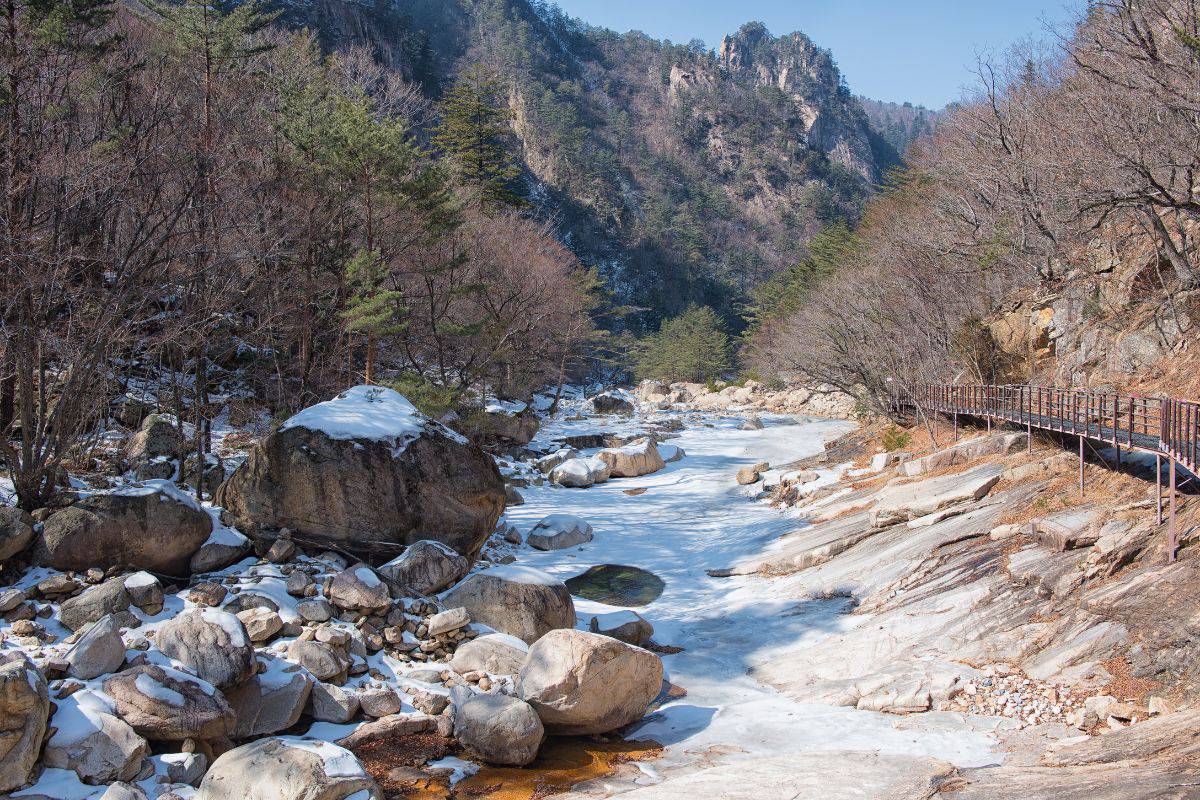
Seonjaryeong Mountains
Seonjaryeong Mountain is one of the most captivating destinations for witnessing Korea's winter wonderland. Nestled within the Baekdudaegan mountain range, this snow-covered gem is renowned for its breathtaking snowy scenes and is celebrated as the snowiest location in the country.
Even into March, the high-altitude peaks of Seonjaryeong and Daegwallyeong accumulate impressive snowfall, making it a prime spot for winter enthusiasts. Hiking trails with gentle inclines allow travelers to traverse the stunning landscape lined with snow-draped pine trees, where each step follows the tracks left by previous adventurers.
As hikers ascend to the summit of Seonjaryeong, they are rewarded with panoramic views that stretch across the city of Gangneung and the shimmering Eastern Sea. The average annual snowfall surpasses a meter, offering a stunning backdrop for any winter outing.
Boseong Green Tea Plantation
Boseong is renowned as one of Korea's premier tea-producing regions, with a sprawling 26.71 hectares dedicated to the cultivation of Korean teas. This picturesque area has a rich history, dating back to the 1600s, when it first began producing this beloved beverage. Over the centuries, Korean green tea has fluctuated in popularity.
During the Joseon Dynasty, it was shunned due to its association with Buddhism, but it saw a resurgence in the 1930s. By the 1970s, Boseong boasted impressive terraced farms, a sight still visible today, inviting visitors to explore its verdant landscapes and witness the picturesque rows of tea bushes.
The unique climate of Boseong, characterized as one of Korea's rainiest regions, is a significant contributor to its exceptional tea quality. With an annual rainfall of at least 1500mm, the environment is perfectly suited for green tea cultivation.
Dubbed the "green tea capital" of Korea, Boseong produces a variety of teas known for their distinct taste and aroma, making it a must-visit destination for tea enthusiasts.
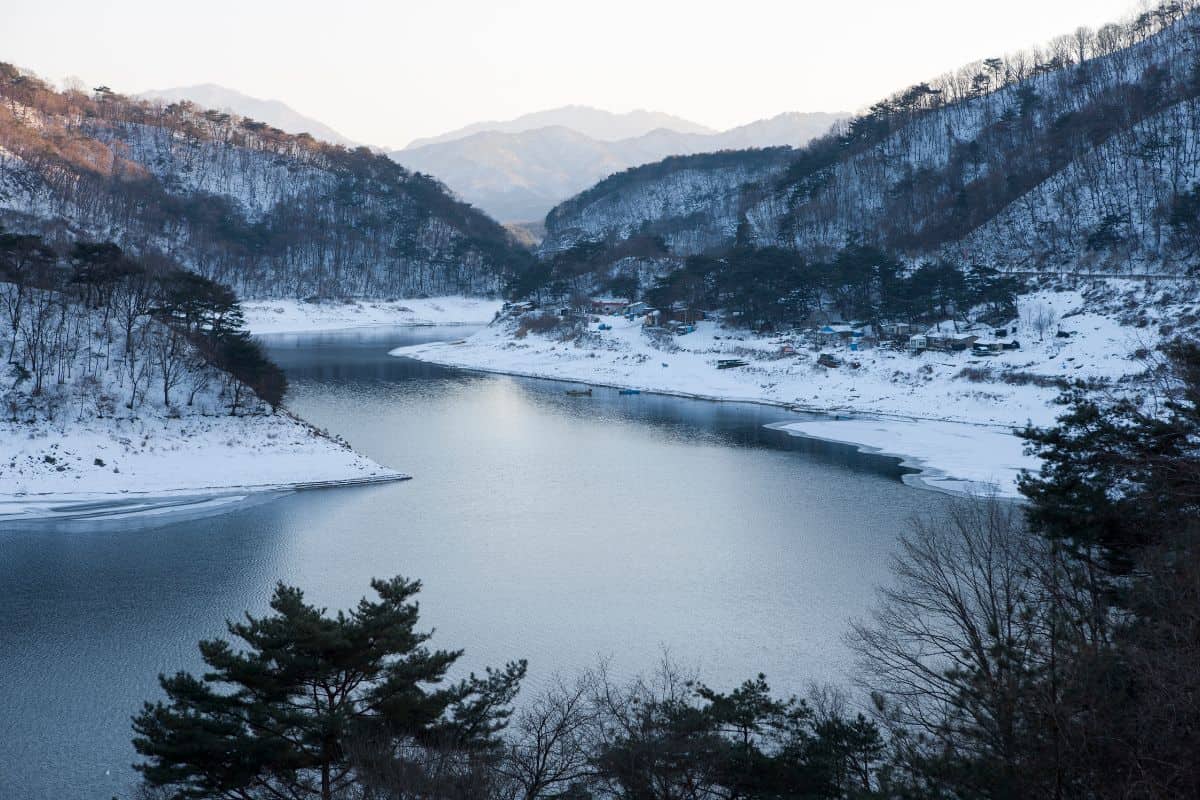
🥳 Korean Festivals in January
Hwacheon Mountain Trout Ice Festival
The Hwacheon Sancheoneo Ice Festival takes place in Hwacheon-gun, Gangwon, offering a winter wonderland filled with snow and ice, making it an ideal destination for a winter getaway. This charming festival was even featured by CNN as one of the "Seven Winter Wonders" in 2011.
The festival's main highlight is ice fishing on the frozen Hwacheoncheon Stream, where participants can experience the thrill of catching fresh trout. Drawing more than a million visitors yearly, the festival showcases its widespread appeal with various programs, including ice sledding and bobsledding.
Festival-goers can also indulge in the unique experience of tasting freshly caught trout grilled on-site, adding a delightful culinary aspect to this frosty celebration.
Taebaeksan Mountain Snow Festival
Each January, the Taebaeksan Mountain Snow Festival transforms the town and its surroundings—including Taebaeksan National Park, Hwangji Pond, and 365 Safetown—into a captivating winter wonderland.
This lively festival is renowned for its grand snow sculptures, which dot the landscape and provide a stunning backdrop for visitors looking to enjoy the magic of winter. Attendees can immerse themselves in themed attractions and engaging programs that celebrate snow-related things, from exhilarating snowball fights to creative snowman-building competitions.
The vibrant atmosphere makes it the perfect destination for families and friends to spend a day. In addition to the breathtaking sculptures, the festival offers a myriad of enjoyment, from local performances to traditional winter games. Visitors can take strolls around the beautifully decorated festival grounds, sipping hot drinks as they soak in the sights.
Daegwallyeong Snow Festival
Each January, the Daegwallyeong Snow Festival in Pyeongchang welcomes visitors to a winter paradise, embodying the charm of this unique Korean celebration since its inception in 1993. Organized by local villagers, the festival culminates in an array of activities all set against the enchanting backdrop of snowy hills.
Attendees can immerse themselves in the excitement of snow rafting, glide down thrilling ice slides, or marvel at performances during 'hidden singer' concerts. With entertainment options like the Pyeongchang Winter Yeonhui Festival and the Snow Flower Song Festival, there’s never a dull moment.
For those seeking a true taste of the season, guests can engage in traditional snowboarding and even craft dried pollack inside an ice igloo. Visitors can also savor delicious buckwheat pancakes, slurp on makguksu (buckwheat noodles), and indulge in Daegwallyeong Korean beef or fresh trout sashimi.
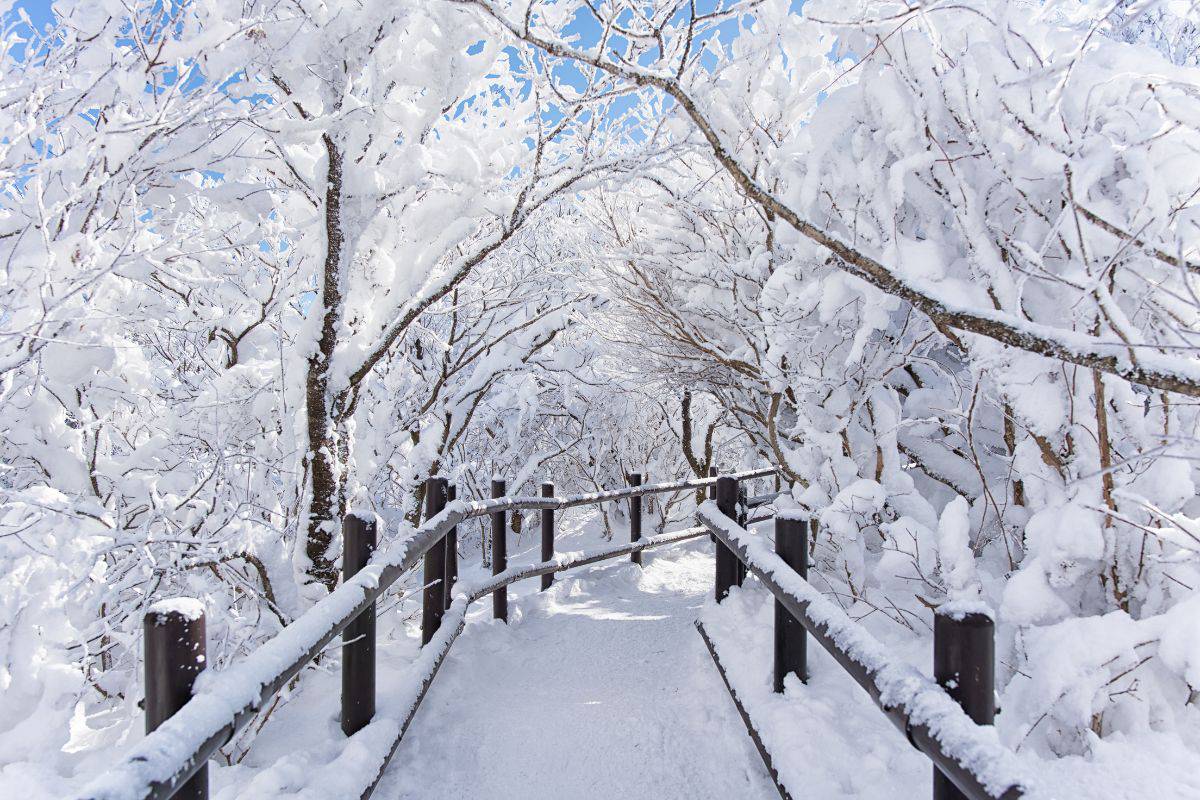
🎊 Korean Public Holidays in January
January marks a significant time for festivities in Korea, starting with New Year's Day on January 1, a day filled with family gatherings and traditional celebrations to welcome the new year. Following this is Seotdal Geumeum on January 28, a day rich in cultural significance and often involves various customs and rituals.
Sometimes also celebrated in January is the Korean New Year, known as Seollal, which sees families come together to honor their ancestors, play traditional games, and enjoy festive meals that symbolize prosperity and good fortune for the year ahead. The dates for Seollal change every year, but always fall between mid-January and mid-February.
🍜 Korean Foods to Try in January
Dak Galbi
For travelers seeking to indulge in an authentic culinary experience, dak galbi (닭갈비) offers a delicious introduction to one of Korea's beloved dishes. This spicy stir-fried chicken dish, consisting of tender boneless chicken pieces, sliced cabbage, and julienned carrots, presents a delightfully spicy explosion of flavors.
The name ‘dak galbi’ translates to chicken ribs, but this dish contains no ribs. It has a rich history dating back to the 1960s in Chuncheon, Gangwon Province, when a resourceful cook sought an affordable alternative to pork ribs for grilling, creating this mouthwatering dish instead.
Kimchi Jjigae
No visit to Korea would be complete without indulging in kimchi jjigae, a beloved staple in Korean cuisine. This hearty stew captures the essence of Korean flavors, melding spicy, savory, and slightly sour notes in one warming dish.
At its core, kimchi jjigae (or kimchi stew) is a delightful blend of tender pork belly, tofu, and fermented napa cabbage simmered gently in a rich anchovy broth. It’s a meal that speaks to the heart, providing nourishment and a comforting experience that resonates with locals and travelers alike.
Widely enjoyed in Japan as well, this spicy stew is perfect for combating winter's chill. Visitors will find that kimchi stew is delicious and a reflection of Korea's culinary culture.
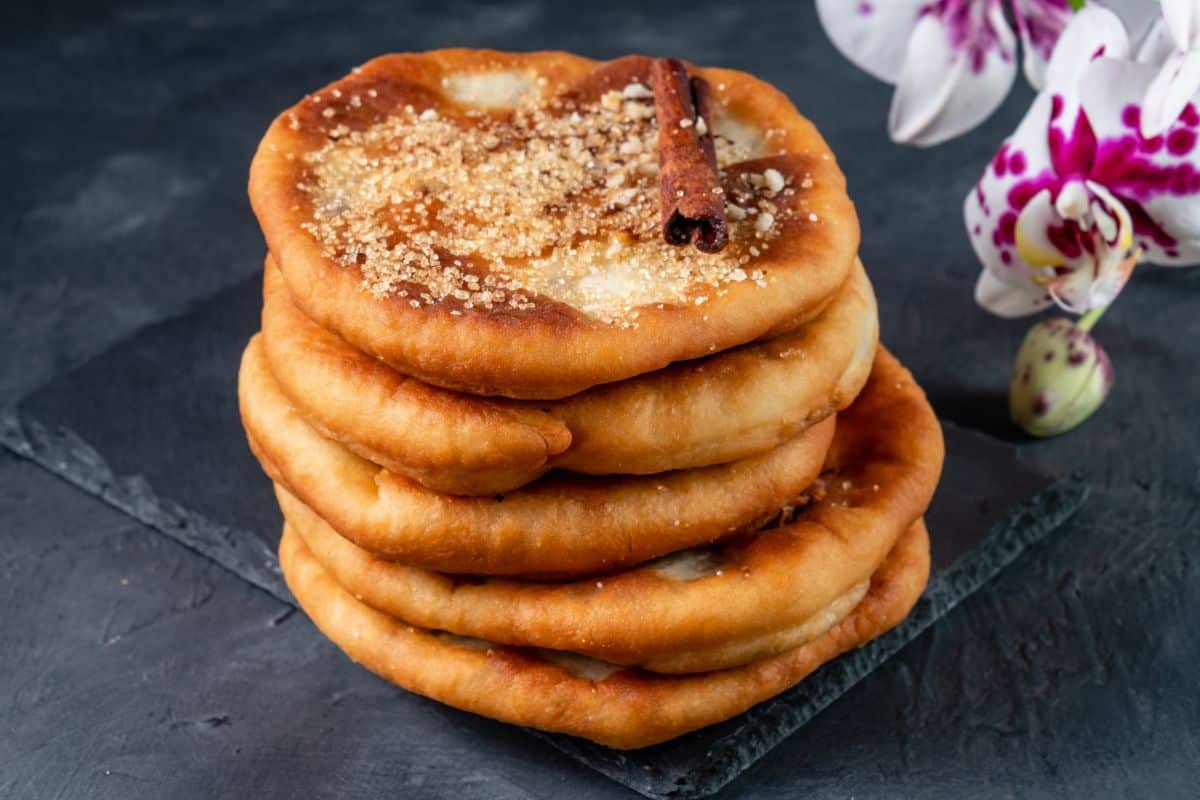
Hotteok
No food journey in Korea is complete without experiencing the delightful hotteok, a beloved street snack that warms the soul during the cold winter months. This delectable treat begins with a fluffy, pan-fried yeast dough expertly stuffed with a rich filling of brown sugar and some chopped nuts & seeds.
The classic version remains popular, showcasing the simple yet satisfying combination of sweetness and crunch. However, the creativity of local street food vendors leads to an exciting variety of hotteok flavors that continue to evolve, offering adventurous foodies new fillings to discover on each visit.
Travelers will be thrilled to find various hotteok options while wandering through bustling markets and festive streets. Beyond the traditional brown sugar and nut filling, many modern interpretations include ingredients like red beans, cheese, vegetables, and even japchae, catering to both sweet and savory palates.
Each bite reveals a warm center that oozes with flavor, making hotteok an irresistible indulgence that encapsulates the essence of Korean street food culture.
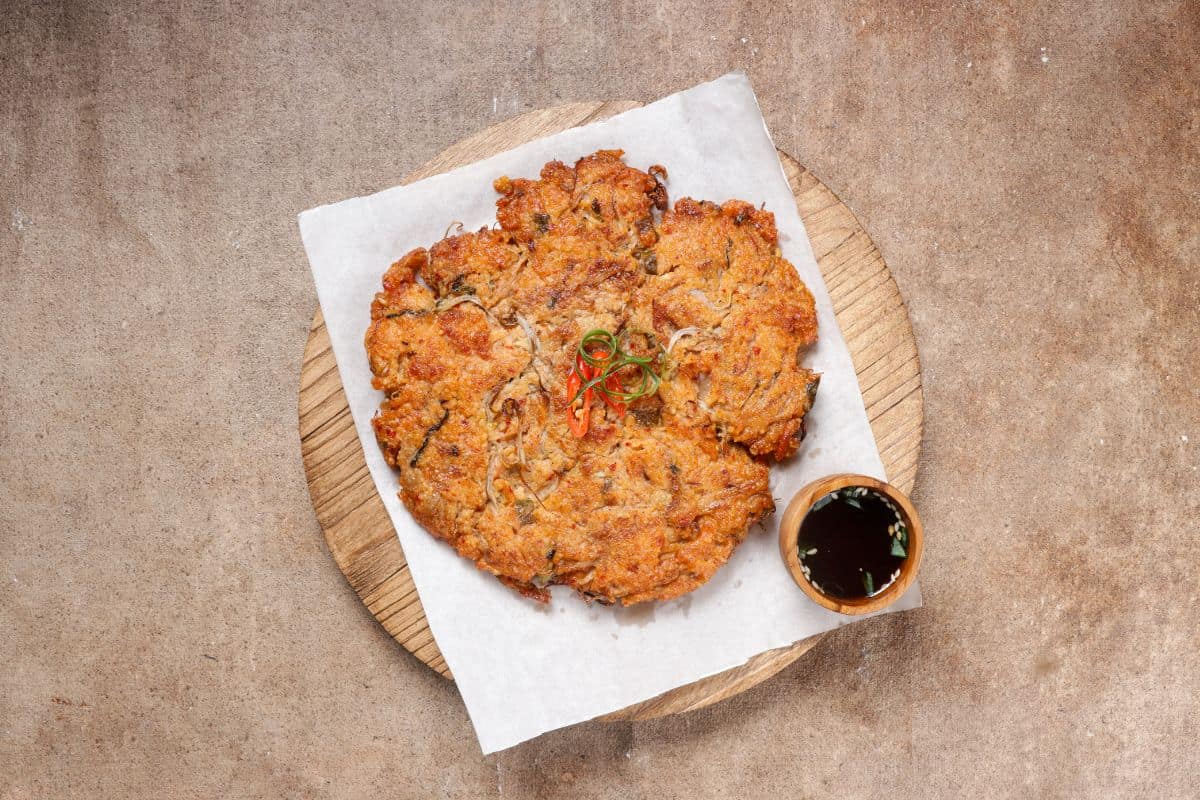
Jeon (Savory Pancakes)
You can't explore Korean cuisine without trying jeon, a tasty variety of pan-fried or battered fritters that showcase Korea's culinary creativity. This term covers many dishes, from veggie-filled delights to seafood and meat options, like the popular yukjeon, made with thin slices of beef. Jeon is a great appetizer and can also be a satisfying main dish, depending on the fillings.
Crispy food lovers will enjoy that these fritters are often served as banchan, the side dishes that accompany meals, or as anju, perfect with drinks like makgeolli, Korea’s traditional rice wine. The most common flavors of jeon are kimchi and pa (spring onion).
When dining out, it's a fun experience to share jeon with friends and family, as it can serve one person or be a snack for a whole group. Restaurants usually offer jeon with a tasty dipping sauce made from soy sauce, rice vinegar, and toppings like sesame seeds and chives, making every bite delicious.
Ramyeon
For an easy and tasty snack, give Korean ramyeon a try. This spicy instant noodle soup is extremely popular in Korea, especially during the colder months when it's perfect for warming up after exploring outside. It's also a favorite comfort food that locals and travelers alike enjoy at any time of day.
While many international brands have their versions, each Korean brand offers its unique flavors and variations of ramyeon with ingredients like seafood, meat, cheese, or vegetables to cater to different tastes, whether dining solo or after a night out with friends.

📝 Korea Itinerary for January
Day 1: Cultural Exploration at Gyeongbokgung Palace
Spend your first day immersing yourself in Korea’s rich history at Gyeongbokgung Palace in Seoul. Dress warmly to explore the vast grounds, and be sure to witness the Changing of the Guard ceremony, happening every evening except Mondays.
Afterward, visit the nearby National Folk Museum for a deeper understanding of Korean culture. In the evening, take a stroll through the vibrant streets of Insadong, where you can shop for unique Korean souvenirs and enjoy traditional Korean street food.
Day 2: Winter Wonderland on Nami Island
Continue your winter in Korea by visiting Nami Island, famous for its stunning landscapes accentuated by snow. Rent a bicycle to explore the scenic paths or take a leisurely stroll amid the enchanting tree-lined avenues.
In the afternoon, warm up with some matcha hot cocoa at one of the island’s cozy cafes, and enjoy local culinary treats made from fresh ingredients. Don’t forget to capture the breathtaking views of the Bukhangang River and the snow-laden scenery!
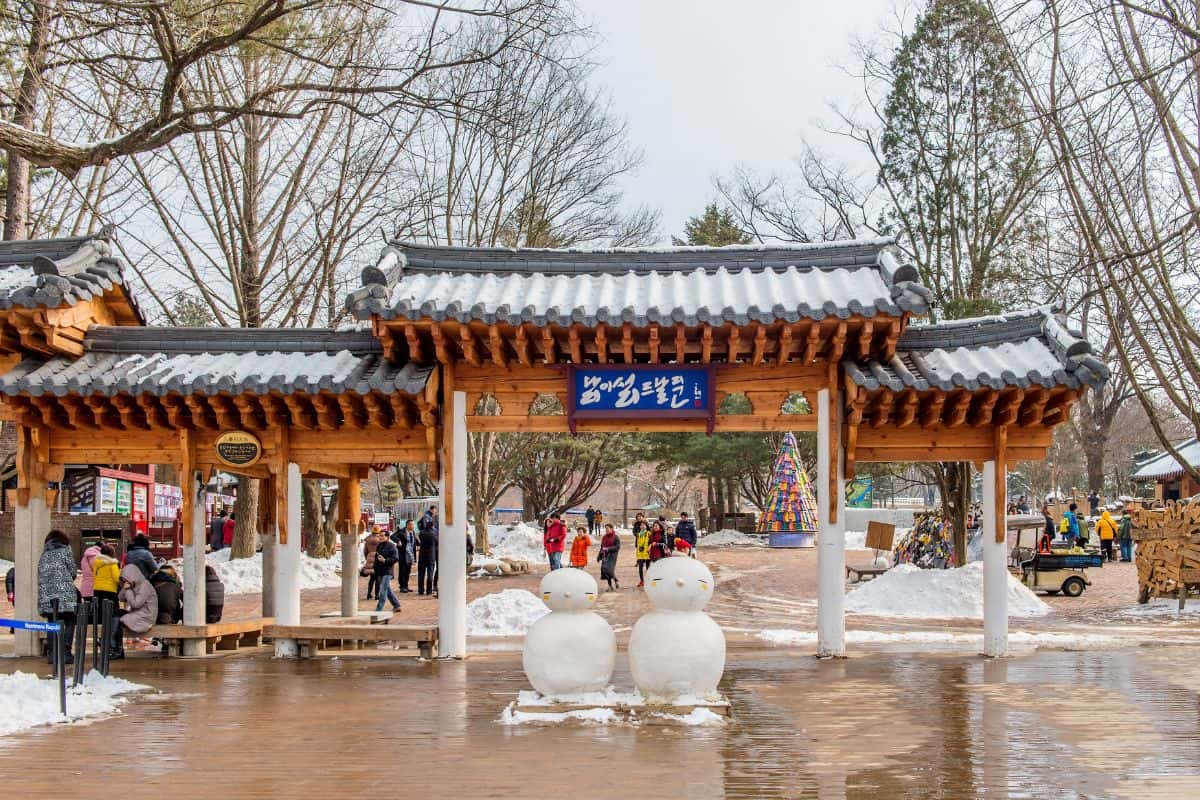
Day 3: Beachside Delights at Busan
Travel south to Busan and spend your third day in Korea experiencing the coastal charm of this bustling city. Visit Haeundae Beach, where you can enjoy the sight of winter waves crashing against the shore.
Sample fresh seafood at the Jagalchi Fish Market, delighting in the local flavors and vibrant atmosphere. In the evening, relax at one of the beachfront cafes or stroll along the Busan Marina, taking in the stunning views of the lights reflecting on the water in Busan at night.
Day 4: Nature’s Beauty at Seonjaryeong Mountains
On your fourth day, head to the Seonjaryeong Mountains to experience Korea’s captivating winter landscapes. Spend the day hiking the gentle trails surrounded by snow-draped pine trees and enjoy panoramic views at the summit.
Take breaks at charming viewpoints to appreciate the pristine snow and serene surroundings. Pack a warm lunch to enjoy amidst nature, making the most of your winter adventure.
Day 5: Tranquility at Boseong Green Tea Plantation
Conclude your trip with a relaxing visit to Boseong Green Tea Plantation in the south. Stroll through the picturesque rows of tea bushes, breathe in the fresh air, and learn about the local tea production process.
Participate in a tea-tasting session to savor the region’s unique flavors and aromas. As the sun sets, enjoy some hot green tea at the plantation’s café, then head over to the bus station to get back to Seoul by midnight.
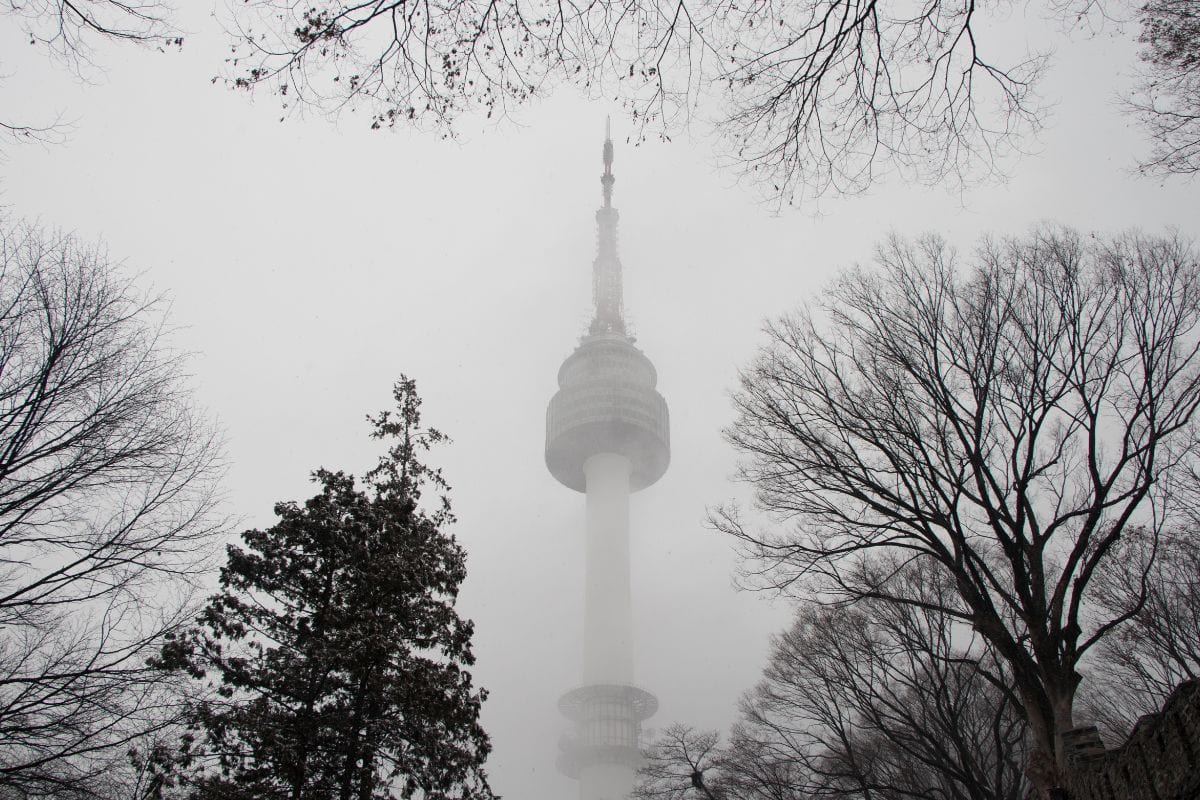
✅ Exclusive Winter Tours for Korea in January
To enhance your Korea winter itinerary, consider booking exclusive tours that offer a more private, immersive experience. These tours can include activities such as snow sledding, ice fishing, and traditional Korean cultural experiences like making kimchi or trying on hanbok (Korean traditional clothing), but double-check the itinerary before you buy.
Trazy's 4D3N Guided Tour in Seoul, South Korea, offers 4 unique tours, each showcasing distinct experiences in Seoul and its surrounding areas, with highlights including Yongpyong Ski Resort, Alpensia Ski Resort, and High1 Ski Resort, all featuring a mix of winter activities and cultural experiences.
Additionally, the Viator 5-Day Tour Outside Seoul provides options tailored to various interests, from winter sports to cultural activities and sightseeing, with popular destinations like a Yeosu, Busan, Wonju, and Hahoe Folk Village all touched upon.
❓ Frequently Asked Questions
The best time to visit Korea during winter is mid-January, when you can experience beautiful snow-covered landscapes, ski resorts, and various winter activities at the January Winter Festivals in Korea.
I recommend you dress in layers with warm, insulated clothing as temperatures can drop below freezing - try Uniqlo in Seoul if you realize your packing error too late. Don't forget to pack gloves, a scarf, and a hat.
Aside from New Year's Day and often Seollal (Korean New Year), there are several other festivals and celebrations held throughout January. These include the Seoul Plaza Ice Skating Rink opening ceremony, the Ice Fishing Festival in Hwacheon, and the International Winter Sports World Cup in Pyeongchang. Many local temples also host special events and ceremonies during this time for those interested in experiencing traditional Korean culture.

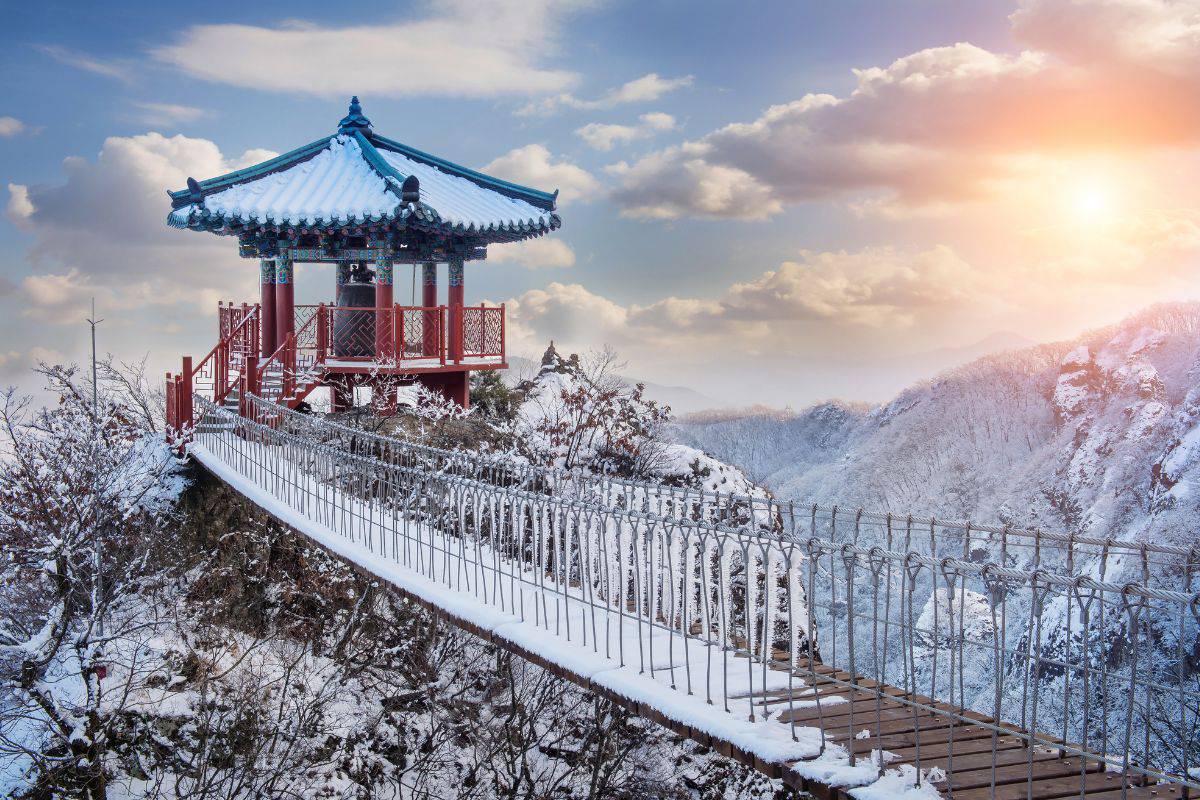
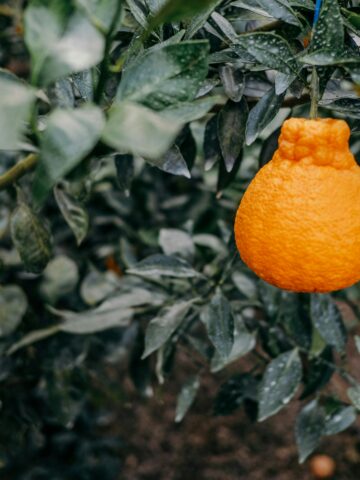

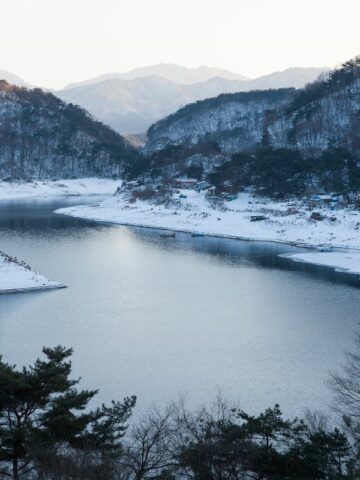
Comments
No Comments